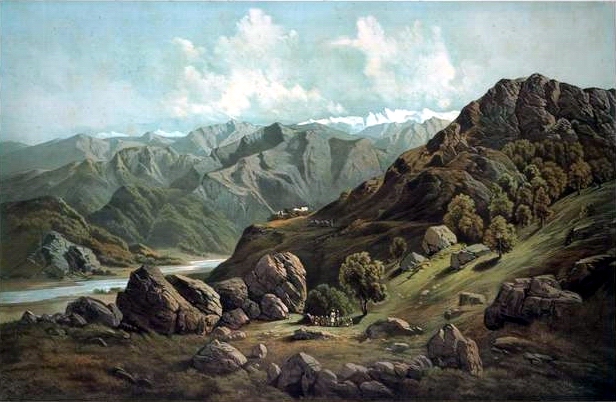|
Sutlej is the
longest of the five rivers of Punjab that flow through northern India,
with its source in Tibet near Mount Kailash to Punjab. It receives the
Beas River in the state of Punjab, India and continues into Pakistan
to join Chenab river to form Panjnad river which furthur joins Indus
river at Mithankot. The Sutlej was known as Shatadru or Sutudri to
Indians in Vedic period and Zaradros or Hesidros to the Greeks.
 |
|
Sutlej Valley from Rampur 1857 |
| This image is taken from the
book "Results of a scientific mission to India and high Asia -
Atlas Part II." By Hermann, Albert and Robert von
Schlagintweit-Sakünlünski, on an expediton made between the
years 1854 and 1867, and published in 1861. |
The waters of
the river are allocated to India under the Indus Water Treaty between
India and Pakistan. At present, most of its water is diverted to
irrigation canals and used up in India. The Bhakra-Nangal dam is a
huge multipurpose dam on the river.
There is substantial evidence to indicate that Sutlej was once an
important tributary of the Sarasvati river, instead of the Indus
river. Due to some natural tectonic convulsion of earth, Sutlej
changed its course to join the Beas river. This resulted in drying of
Saraswati, desertification of Cholistan and Sindh, and abandonment of
numerous ancient human settlements along the Saraswati river. |

